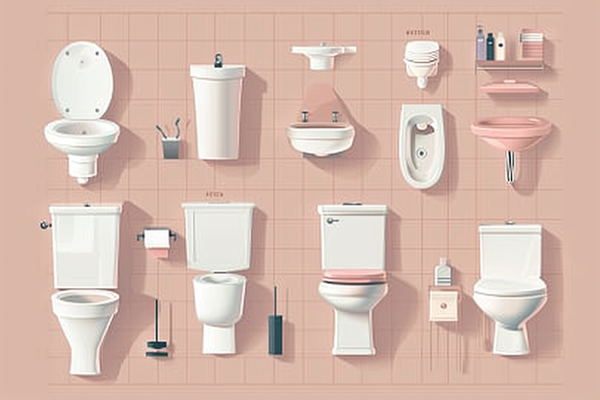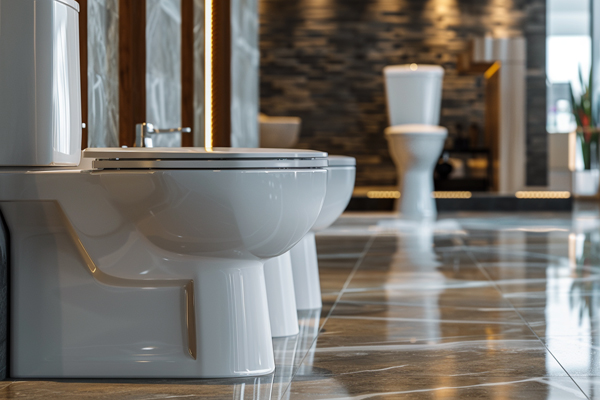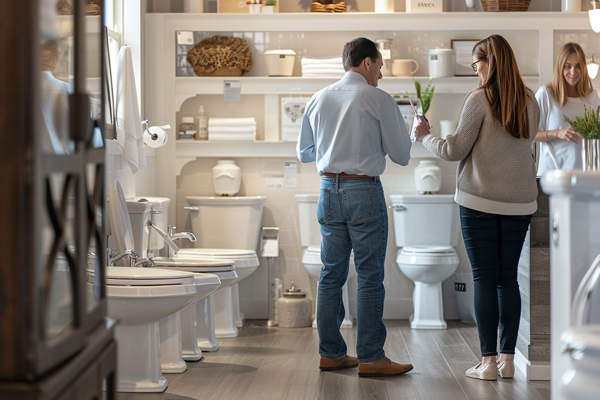
Toilets come in various designs and sizes, often raising questions about their weight. Let’s explore the details to help you make informed choices.
Toilets usually weigh between 70 and 120 pounds. Factors like design, materials, and structure determine the weight.
Discover Discover why toilet weight matters and what to consider when buying one1 for your home or project.
What Is the Average Weight of a Toilet?
Toilets are not as light as they look. Most standard models fall within a specific weight range.
The average weight of a toilet ranges from 70 to 120 pounds, depending on its type and design, Learn more about what affects toilet weight2.

Weight varies due to material and construction differences. For example:
Factors Affecting Toilet Weight
| Material | Weight Impact | Durability Level |
|---|---|---|
| Porcelain | Heavier | High |
| Plastic | Lighter | Moderate |
Consider these factors when choosing a toilet. Heavier toilets often indicate better durability, but lightweight options suit specific needs like easy installation.
How Much Weight Can a Standard Toilet Support?
Durability matters, especially for public or high-usage settings. How much can a standard toilet handle?
A standard toilet can support up to 1,000 pounds, according to most manufacturers' specifications.
Check product certifications and ratings3 to ensure suitability.

While weight support is impressive, always check the product’s certification and ratings to ensure it meets your requirements.
Key Considerations for Weight Support
- Installation Quality: A well-installed toilet supports more weight.
- Wall-Mounted vs. Floor-Mounted: Wall-mounted toilets often have stricter weight limits.
- Usage Environment: Commercial spaces require higher capacity models.
Does a Toilet’s Weight Indicate Its Quality?
Is heavier always better when it comes to toilets? The answer might surprise you.
Toilet weight can sometimes correlate with quality, but other factors like material and design are equally important. Explore quality vs. weight in toilets4

Heavy toilets often use durable materials, but lightweight models with innovative designs can also perform exceptionally.
Quality vs. Weight: What Matters Most?
| Aspect | Heavier Models | Lighter Models |
|---|---|---|
| Durability | Higher | Moderate |
| Ease of Handling | Difficult | Easier |
| Installation Cost | Higher | Lower |
Always evaluate a toilet’s features alongside its weight.
What Are the Weight Differences Between One-Piece and Two-Piece Toilets?
Toilets come in one-piece or two-piece designs, each with unique weight characteristics.
One-piece toilets are heavier, averaging 80–120 pounds, while two-piece models are lighter at 70–100 pounds. Find out which design suits your needs5

One-piece toilets are bulkier but easier to clean. Two-piece models are more versatile and simpler to transport.
Comparison of One-Piece vs. Two-Piece Toilets
| Feature | One-Piece | Two-Piece |
|---|---|---|
| Weight | Higher | Lower |
| Maintenance | Easier | Moderate |
| Transportability | Challenging | Convenient |
Choose based on your priorities, such as ease of maintenance or portability.
How Heavy Are Wall-Mounted Toilets Compared to Floor-Mounted Models?
Wall-mounted and floor-mounted toilets differ in both installation style and weight.
Wall-mounted toilets weigh less, typically 50–80 pounds, while floor-mounted models weigh 70–120 pounds.

The lighter weight of wall-mounted toilets makes them a great choice for modern, space-saving designs.
Pros and Cons of Wall-Mounted Toilets
| Feature | Wall-Mounted | Floor-Mounted |
|---|---|---|
| Weight | Lighter | Heavier |
| Installation | Complex | Simple |
| Space-Saving | Yes | No |
Consider the installation requirements and aesthetics when choosing between these options.
What Should You Consider When Buying a Toilet Based on Weight?
Toilet weight impacts installation, usage, and overall performance. What should you prioritize?
When buying a toilet, consider factors like weight, material, installation, and purpose to find the perfect match.

Focus on practical elements like durability, design, and compatibility with your bathroom setup.
Buyer’s Checklist for Toilet Weight
- Bathroom Size: Larger bathrooms can accommodate heavier models.
- Installation Style: Wall-mounted toilets require lighter options.
- User Needs: Heavier toilets may offer better durability for high-traffic areas.
Conclusion
Toilet weight significantly affects durability, ease of installation, and usability. Heavier toilets, such as one-piece models, often provide better durability and are ideal for high-traffic areas, while lighter options, like wall-mounted toilets, offer space-saving advantages. Understanding the differences between toilet types, materials, and weight capacities can help you make the best choice for your bathroom. Always consider your specific needs, installation requirements, and long-term usability when selecting a toilet.
-
Learn how toilet weight impacts durability, installation, and user experience. ↩
-
Understand the key factors that influence toilet weight. ↩
-
Verify toilet certifications and weight specifications for safe use. ↩
-
Compare the relationship between toilet weight, quality, and design. ↩
-
Identify the right toilet design based on weight and usability. ↩









